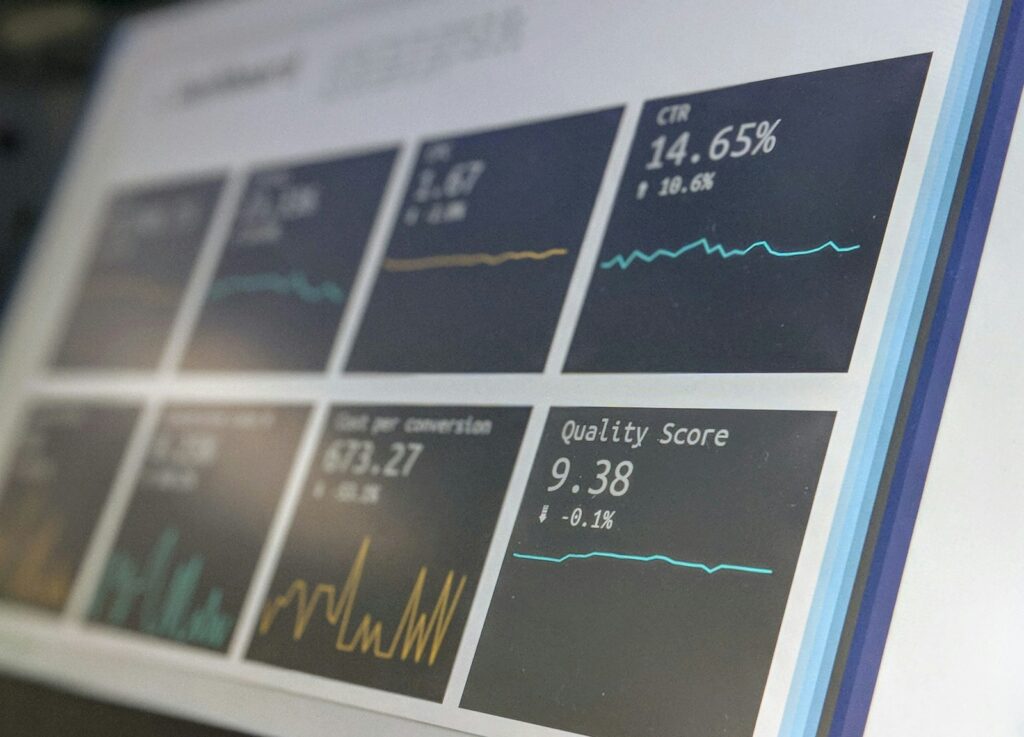
Investing in the stock market might seem daunting, especially for those just starting out. The world of individual stocks, complex analyses, and high-stakes decisions can feel overwhelming, often leading many to believe that only financial experts can truly succeed. However, this perception couldn’t be further from the truth, thanks in large part to the accessibility and effectiveness of index funds.
Index funds have revolutionized how ordinary individuals can participate in market growth, offering a straightforward, low-cost path to building wealth over time. They essentially put your stock investment strategy on autopilot, allowing you to bypass the need to meticulously research individual companies or incur expensive fees from investment managers. This approach empowers anyone to work towards excellent appreciation over the long run, without needing to be a stock market expert.
This comprehensive guide is designed to demystify index fund investing, providing you with the foundational knowledge and practical steps necessary to begin your journey. We’ll explore what these powerful investment vehicles are, how they function, and the compelling reasons why they have become a cornerstone for millions of investors worldwide, along with some considerations to keep in mind. By the end of this section, you’ll have a clear understanding of the initial considerations and the vital first step in your index fund investing adventure.

1. **Understanding What an Index Fund Is**An index fund is an investment designed to mirror the performance of a specific financial index. Think of an index as a carefully curated basket of securities—stocks or bonds—that represents a particular segment of the financial market. For instance, well-known benchmarks like the S&P 500 or the Nasdaq Composite are prime examples of such indexes. Investing in an index fund means you are essentially investing in a diversified slice of the market that the index tracks.
These funds are considered “passively managed.” Unlike actively managed funds, where a fund manager constantly buys and sells investments in an attempt to “beat the market,” an index fund manager’s primary goal is simply to replicate the underlying index’s performance. This passive approach often translates into lower operational costs and, historically, more consistent returns over the long term, as many actively managed funds struggle to consistently outperform their benchmarks.
Index funds offer immediate exposure to many different companies with a single purchase. For example, an S&P 500 index fund provides exposure to 500 of the largest U.S. public companies, which together represent about 75% of the U.S. stock market’s total value. This inherent diversification is a significant benefit, as it spreads your investment across numerous assets, reducing the risk associated with the performance of any single company. They are a group of investments that aims to mirror the performance of an existing market index.
The underlying index itself is made up of companies or securities that represent a part of the financial market. Some large indexes even offer a look into the health of the economy as a whole. This broad exposure, without the need for extensive individual stock research, is a key reason why index funds are an excellent entry point for new investors. They simplify the complex world of market participation, allowing you to invest in a diverse portfolio with relative ease.
Read more about: Your Essential Guide to Mandatory Minimum Car Insurance: Navigating State-Specific Requirements Across the U.S. in 2025

2. **How Index Funds Work**The operational mechanism of index funds is remarkably straightforward, yet highly effective. They function by investing proportionally in all the components of their target index. If an index fund tracks the S&P 500, it will invest in all 500 companies included in that index, and crucially, in the same proportions as each company is represented within the index itself. This methodical replication ensures that the fund’s performance closely aligns with that of its benchmark.
Index funds are typically structured as a type of mutual fund or exchange-traded fund (ETF). When you purchase a share of an index fund, your invested amount is automatically distributed across dozens, hundreds, or even thousands of companies, depending on the breadth of the index it tracks. This automatic distribution is what creates instant diversification within your portfolio, spreading your risk across a wide array of assets without requiring you to buy each stock individually.
The core idea is simple: if the S&P 500 index, for example, rises by 10%, a well-managed S&P 500 index fund should also see its value increase by approximately the same amount, minus any minimal investment fees. This “matching” strategy eliminates the need for active management decisions, such as deciding which stocks to buy or sell, as the fund simply adheres to the composition of its benchmark index. This passive approach is a significant factor in their generally lower operating costs compared to actively managed alternatives.
Making regular contributions to these large index funds often forms the backbone of a robust, long-term investment strategy. For instance, if you’re saving for retirement, index funds can be a fantastic choice for your portfolio, allowing your money to grow slowly and steadily over time. Exchange-traded funds (ETFs) that track indexes can achieve the same result and often come with lower investment minimums, making them highly accessible for beginners. This mechanism allows investors to put their money to work in the stock market without needing to delve into individual stock analysis.
Read more about: Your Essential Guide to Mandatory Minimum Car Insurance: Navigating State-Specific Requirements Across the U.S. in 2025

3. **The Advantages of Index Fund Investing (Pros)**Investing in index funds is widely regarded as one of the easiest and most effective avenues for individuals to build wealth. By simply matching the impressive performance of the broader financial markets over extended periods, index funds possess the power to transform your investment into a substantial nest egg in the long run. Perhaps the most appealing aspect is that you don’t need to be a seasoned stock market expert to reap these benefits.
One of the primary advantages is the **minimal investment research** required. Investors can confidently rely on the index fund’s portfolio manager to passively match the underlying index’s performance over time. This means if you invest in an S&P 500 index fund and the S&P 500 experiences a 10% gain, your investment should appreciate by a similar percentage. This ‘autopilot’ feature frees you from the arduous task of analyzing company financials or market trends.
Furthermore, index funds offer **managed investment risk** through inherent diversification. Because your money is spread across many companies, you are significantly less susceptible to substantial losses if a single company or a small group of companies within the index faces difficulties. This broad exposure to hundreds of stocks with a single purchase creates a balanced and resilient portfolio, which is particularly beneficial for mitigating individual stock risk.
The market also offers a **plethora of choices** when it comes to index funds. You have the flexibility to select broad market index funds that track major benchmarks like the S&P 500, or you can opt for more specialized funds that focus on specific sectors or emerging trends. For instance, if you’re keen on investing in artificial intelligence stocks, there are dedicated AI index funds available to facilitate that. This variety allows investors to tailor their exposure to align with their interests and broader market views.
Another compelling benefit is **low fees**. Index funds are typically far more cost-effective than alternatives such as actively managed funds. This cost efficiency stems from their passive management strategy; an index fund manager simply buys the stocks or other investments in an index according to its composition, which requires less active decision-making and, consequently, lower management expenses. These lower fees directly translate to more of your money staying invested and working for you.
Finally, index funds boast **tax efficiency**. Compared to many other investment vehicles, index funds tend to be quite tax-efficient. They generally engage in less frequent buying and selling of their holdings than actively managed funds, which results in fewer capital gains distributions that can contribute to your annual tax bill. This characteristic can help optimize your after-tax returns, further enhancing the long-term growth of your investments. Building your portfolio over time with index funds encourages a passive investment approach, allowing you to invest consistently and disregard short-term market fluctuations, confident in the market’s long-term growth potential.

4. **The Downsides of Index Fund Investing (Cons)**While index funds present numerous compelling advantages, it’s equally important for new investors to understand their inherent limitations. As simple and effective as index funds are, they are not universally suitable for every investor’s unique objectives or risk tolerance. Acknowledging these drawbacks is crucial for making informed investment decisions and ensuring that index funds align with your personal financial strategy.
One significant downside is the **absence of an opportunity to beat the benchmark**. Index funds are meticulously designed with a singular objective: to match the performance of their respective market or benchmark index. If your investment ambition includes proving your acumen as a superior investor by outperforming the market, index funds, by their very design, will not provide that particular challenge or opportunity. They are built for consistent market-matching returns, not for speculative outperformance.
Another factor to consider is **short-term downside risk**. Index funds faithfully track their respective markets, which means they participate equally in both prosperous periods and market downturns. They can be volatile places to put your money, especially in the short term. For example, investors might have been reminded of this during a stock market correction in early 2025, fueled by tariff uncertainty, as noted in the context. If your primary investment goal is capital preservation—that is, avoiding any loss of your initial principal—then other assets like bonds or high-yield certificates of deposit (CDs) might be more appropriate choices for a portion of your portfolio.
Furthermore, while diversification is generally a strong advantage, it can also manifest as a subtle disadvantage due to the **many different stocks** included. The diversification offered by an index fund works in both directions. Depending on the specific index you choose, you could inadvertently end up holding shares in companies you would rather not own, perhaps due to ethical concerns or specific industry views. Conversely, this broad inclusion might also mean you miss out on concentrating your investment in a few select companies that you strongly believe will outperform, which an individual stock picker might pursue.
It’s also worth noting that some index mutual funds, particularly older or less efficient ones, might have **steep minimum investment requirements**. While many modern ETFs and newer index funds, especially those from providers like Fidelity, have eliminated minimums or allow fractional share purchases, older mutual fund structures can sometimes demand several thousand dollars to get started. This can be a barrier for investors with smaller starting capitals, although this is becoming less common with the proliferation of low-cost ETFs and commission-free trading options.
Lastly, depending on where your index funds are held, **distributions may generate income tax liability**. While index funds are generally more tax-efficient than actively managed funds, they still make distributions (like dividends or capital gains distributions from rebalancing the index) that can be taxable if held in a regular brokerage account, rather than a tax-advantaged account like an IRA or 401(k). Investors need to keep an eye on any income tax they may owe from these distributions.

5. **Setting Your Investment Goals**Before embarking on any investment journey, especially with index funds, the most crucial first step is to clearly define your investment goals. Without a clear objective, your investment strategy can lack direction and purpose, making it difficult to assess progress or make informed adjustments. Understanding what you want your money to achieve for you is foundational to selecting the right index funds and maintaining a disciplined approach.
Ask yourself what you are saving for. Are you looking for a short-term vehicle to park your money and earn a modest amount of interest? If so, index funds might not be the ideal choice for that specific purpose. For short-term needs, alternatives such as certificates of deposit (CDs), high-yield savings accounts, or money market funds might be more suitable, as they prioritize capital preservation and liquidity over long-term growth.
However, if your objective is to allow your money to grow steadily over an extended period, perhaps for significant life milestones like retirement planning, a child’s education fund, or a down payment on a home several years down the line, then index funds can be an exceptional fit for your portfolio. They are particularly well-suited for long-term investors who can weather short-term market fluctuations and benefit from the compounding effect of returns over decades.
Your investment horizon and risk tolerance are inextricably linked to your goals. Long-term goals typically allow for a higher allocation to equities (like stock index funds) because you have more time to recover from market downturns. Conversely, shorter-term goals often necessitate a more conservative approach. Understanding these aspects will help you determine the appropriate mix of stock and bond index funds, ensuring your portfolio aligns with how much risk you’re comfortable taking and the timeframe you’re working with.
Defining your goals also helps in deciding how much to invest and how frequently. Whether you plan to make a lump-sum investment or commit to regular monthly contributions, your financial goals will dictate the pace and volume of your investments. Index funds are a great solution for those who want to grow their money but prefer to put some or all of their investments on autopilot, confident that their structured approach is moving them closer to their financial aspirations.
Having established your investment goals, the next crucial phase in your index fund journey involves translating those aspirations into concrete actions. This practical section will guide you through the actionable steps required to identify, select, acquire, and manage your index fund investments, ensuring they form a robust and diversified backbone for your long-term financial portfolio. We will delve into the specifics of researching indexes, scrutinizing fund choices based on costs, executing your trades, and maintaining oversight of your investments over time. This approach ensures you are well-equipped to navigate the market with confidence and discipline.
Read more about: A Financial Advisor’s Blueprint: 15 Essential Investment Strategies for a Secure Retirement in 2025

6. **Picking Your Index**The vast universe of index funds begins with the selection of an underlying index. There are literally hundreds of indexes you can choose to track, each representing a different segment of the market or a particular investment theme. Your choice should ideally align with your investment goals and your desired level of market exposure, forming the very foundation of your portfolio strategy.
The most popular and often recommended index for broad market exposure is the S&P 500. This benchmark comprises the stocks of 500 of the largest U.S. companies and is widely recognized as the best gauge of the overall U.S. stock market’s performance. Investing in an S&P 500 index fund offers immediate diversification across a significant portion of the American economy, making it an excellent starting point for many investors.
Beyond the S&P 500, the market offers a diverse array of other top indexes tailored to various preferences. For those interested in large U.S. stocks, the Dow Jones Industrial Average and Nasdaq Composite are additional options. If you prefer exposure to smaller U.S. companies, the Russell 2000 and S&P SmallCap 600 indexes are designed for that purpose. International exposure can be gained through indexes like MSCI EAFE, which tracks developed nations outside the U.S. and Canada, or MSCI Emerging Markets for rapidly growing economies. For fixed-income investments, the Bloomberg Global Aggregate Bond index covers a broad range of bonds.
Furthermore, you aren’t limited to broad market indexes. The financial landscape also offers sector-specific indexes, allowing you to focus on industries like technology, healthcare, or consumer goods. You can even find indexes tied to specific trends, such as artificial intelligence (AI) stocks or cybersecurity. Country indexes target specific international markets, while style indexes emphasize fast-growing companies or value-priced stocks. This flexibility allows investors to truly customize their market exposure.
Read more about: Unbelievable: 14 Hollywood Legends Who Shop Smart and Rock Thrift Store Finds

7. **Choosing the Right Fund for Your Index and Understanding Costs**Once you have pinpointed an index that aligns with your investment strategy, the next step involves selecting the specific index fund that tracks it. For widely popular indexes like the S&P 500, you might encounter a dozen or more fund choices from various providers. This is where a keen understanding of costs becomes paramount, as even seemingly minor differences in fees can significantly impact your long-term returns.
One of the most critical metrics to evaluate is the expense ratio. This is an annual fee, expressed as a percentage of your total investment, that is subtracted from each fund shareholder’s returns to cover the fund’s administrative and management costs. Index funds are generally known for their low expense ratios due to their passive management strategy. For example, the Vanguard S&P 500 ETF (VOO) has an expense ratio of 0.03%, equating to a $3 annual cost for a $10,000 investment. Schwab’s S&P 500 Index Fund (SWPPX) goes even lower at 0.02%, while Fidelity Zero Large Cap Index (FNILX) remarkably charges 0.0% annual expenses, allowing investors to keep all their cash invested for the long run. These low fees mean more of your money stays invested and continues to compound over time.
Another important consideration, particularly for mutual funds, is the investment minimum. While many modern ETFs and newer index funds, especially those from providers like Fidelity, have eliminated minimums or allow fractional share purchases, some older mutual fund structures can still demand several thousand dollars to get started. For instance, the Vanguard 500 Index Fund – Admiral Shares (VFIAX) has a $3,000 minimum. It’s essential to check these requirements to ensure the fund is accessible given your starting capital.
Comparing index funds also involves looking beyond just the expense ratio and minimums. You can find detailed information, including expense ratios and other charges, in the mutual fund’s prospectus or by looking up a quote on a financial website. Providers like Vanguard and Schwab are renowned for their low-cost offerings, providing excellent entry points for new index fund investors. Fidelity also offers highly competitive options, including their pioneering “Zero” funds with no annual expenses, truly a game-changer for cost-conscious investors.
For practical examples, consider some of the best index funds available. For the S&P 500, options like Fidelity Zero Large Cap Index (FNILX), Schwab S&P 500 Index Fund (SWPPX), and Fidelity 500 Index Fund (FXAIX) stand out for their minimal or zero expense ratios and no investment minimums. If you’re looking at the Nasdaq-100, the Invesco NASDAQ 100 ETF (QQQM) and Invesco QQQ (QQQ) are popular choices. For bond market exposure, the Fidelity U.S. Bond Index Fund (FXNAX) is notable for its extremely low 0.025% expense ratio and no minimum investment, making it the cheapest bond index fund we track. These examples highlight the variety and accessibility of low-cost funds in the market today.
Read more about: The Unseen Pitfalls: Why These 7 Car Colors Could Be Your Next Big Automotive Regret

8. **Acquiring Index Fund Shares**With your investment goals set and your preferred index fund identified, the next step is the actual purchase of shares. This process is surprisingly straightforward, especially if you already have a brokerage account. If not, opening one is a fundamental starting point, and many platforms cater specifically to beginners, offering user-friendly interfaces and educational resources.
Most people prefer to consolidate all their investments in a single brokerage account for convenience and ease of management. You could also open an account directly with a fund provider, such as Vanguard, but a unified brokerage account often simplifies portfolio oversight. Many modern brokers and investment apps also allow customers to buy fractional shares of index funds, particularly in ETF form. This feature is particularly beneficial for new investors, as it enables them to start investing and build a diversified portfolio without needing thousands of dollars upfront. You can invest a fixed dollar amount, and the system will purchase the corresponding fraction of a share.
The actual steps to place an order are generally consistent across most platforms. First, log in to your brokerage account. Then, use the search bar to find your desired index fund by entering its ticker symbol or full name. Once you’re on the fund’s trading page, you’ll need to decide how many shares or what dollar amount you wish to invest, considering your investment goals and portfolio allocation.
When purchasing, you’ll typically choose an order type. A market order will buy shares at the current market price, executing almost immediately. A limit order allows you to specify the maximum price you are willing to pay per share, providing more control but with the risk that your order might not be filled if the price doesn’t drop to your specified level. For most long-term index fund investors, a market order is often sufficient due to the focus on long-term growth rather than short-term price fluctuations. After reviewing all the details, you submit your order. It’s always a good practice to check your portfolio afterward to ensure the order was filled as expected and to update your investment records accordingly.
Read more about: A Financial Advisor’s Blueprint: 15 Essential Investment Strategies for a Secure Retirement in 2025

9. **Monitoring Your Index Fund Investments**While index funds are celebrated for their passive management and “set it and forget it” appeal, this doesn’t imply a complete lack of oversight. Regularly monitoring your investments is a crucial practice to ensure they continue to perform as expected and remain aligned with your financial objectives. This ongoing engagement allows you to catch any significant deviations and make informed decisions, albeit with a long-term perspective.
The primary aspect to monitor is whether your index fund is accurately mirroring the performance of its underlying index. You can typically check this by reviewing the fund’s returns on your brokerage platform or a financial quote page, which often compares the fund’s performance against its benchmark over various time periods. It’s normal for fund returns to not be perfectly identical to the index, as minimal investment costs (expense ratios) and taxes will slightly affect the results. However, if the fund’s performance consistently lags the index by significantly more than its expense ratio, it might be a red flag warranting further investigation.
Periodically reevaluating the costs associated with your fund is also wise. While you may have chosen a low-cost fund initially, expense ratios can sometimes change, or new, even cheaper alternatives might emerge. If the fees start to stack up over time, or if a more cost-effective fund tracking the same index becomes available, you might consider reallocating your investment to optimize your returns. This continuous vigilance ensures that cost efficiency remains a cornerstone of your investment strategy.
Finally, monitoring your investments also involves reflecting on your broader financial journey. As your knowledge and comfort with investing grow, you might find yourself drawn to more hands-on approaches. If the desire to prove your mettle as an investor or to concentrate your investments in specific companies grows, you may want to explore buying individual stocks. However, for most investors, index funds remain a powerful and efficient tool for long-term wealth building, and they can even serve as a strong backbone to a portfolio that also includes individual stock selections.
Read more about: A Financial Advisor’s Blueprint: 15 Essential Investment Strategies for a Secure Retirement in 2025

10. **Integrating Index Funds into a Diversified Long-Term Portfolio**The true power of index funds lies in their ability to simplify the creation of a well-diversified, long-term investment portfolio. A robust portfolio typically encompasses a strategic blend of various asset types, notably stocks and bonds, to manage risk and maximize growth potential. Index funds, by their very nature, facilitate this diversification, often allowing you to build a balanced portfolio with just a few carefully chosen funds.
Index funds offer exposure to hundreds or even thousands of stocks or bonds with a single purchase, automatically spreading your investment across a broad market segment. This inherent diversification is a key advantage, reducing your susceptibility to significant losses if a single company or a small group of assets performs poorly. Rather than meticulously researching individual companies, you gain instant exposure to the collective performance of an entire market, sector, or asset class, which can lead to more consistent returns over the long haul.
For beginner investors, a common and effective portfolio allocation strategy might involve a mix such as 85% stocks and 15% bonds. Index funds make implementing such a strategy remarkably easy. For example, if you’re starting with just $200, you could allocate $170 to a broad stock index fund like Fidelity Zero Large Cap Index (FNILX), which tracks the S&P 500, and the remaining $30 to a bond index fund like Fidelity U.S. Bond Index Fund (FXNAX). This simple combination instantly provides diversified exposure to both equity growth potential and the stability offered by bonds, tailored to your risk tolerance and investment goals.
This strategic integration encourages a passive, disciplined investment approach. By consistently investing in these funds over time, regardless of short-term market fluctuations, you position yourself to benefit from the market’s long-term growth potential and the powerful effect of compounding. Index funds can truly serve as the solid backbone of any investment portfolio, enabling you to confidently work towards your financial aspirations without the need to be a market expert or engage in constant trading. They empower you to put your investments on autopilot, knowing you are building a resilient nest egg for the future.
Read more about: Kylie Jenner: Unpacking Her Empire, Influence, & Style Evolution That Totally Suits Her
Building wealth doesn’t have to be a labyrinth of complex analyses and high-stakes gambles. As we’ve explored, index funds offer a clear, credible, and remarkably effective pathway for anyone to participate in the stock market’s growth. They are a testament to the idea that smart investing is often about consistency, diversification, and minimizing costs, rather than trying to outwit the market. By understanding their mechanics, leveraging their advantages, and following these practical steps, you’re not just investing; you’re setting a course for a more secure and prosperous financial future. So, take that first step, embrace the power of passive investing, and watch your financial aspirations take flight with index funds as your trusted co-pilot.



